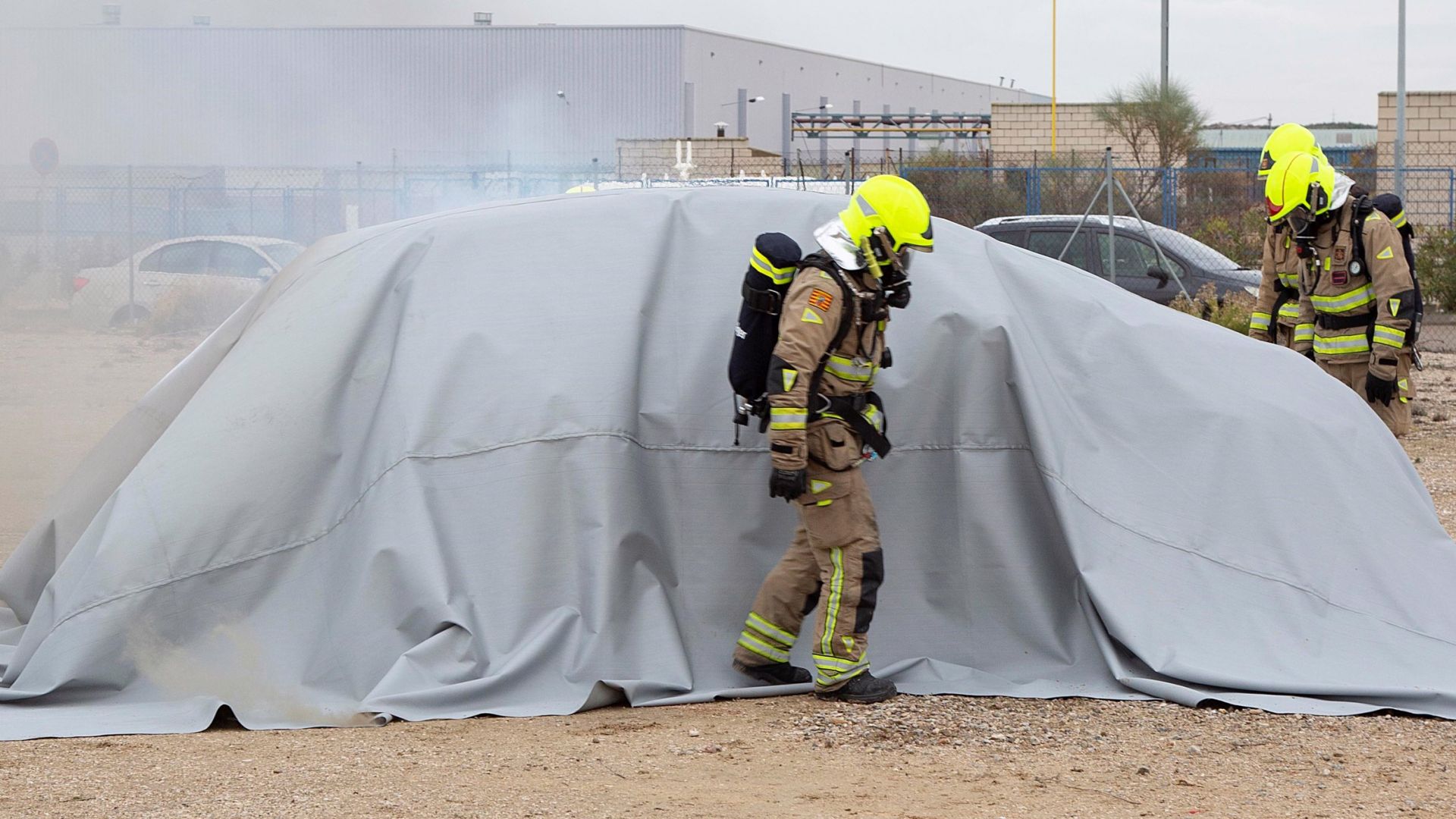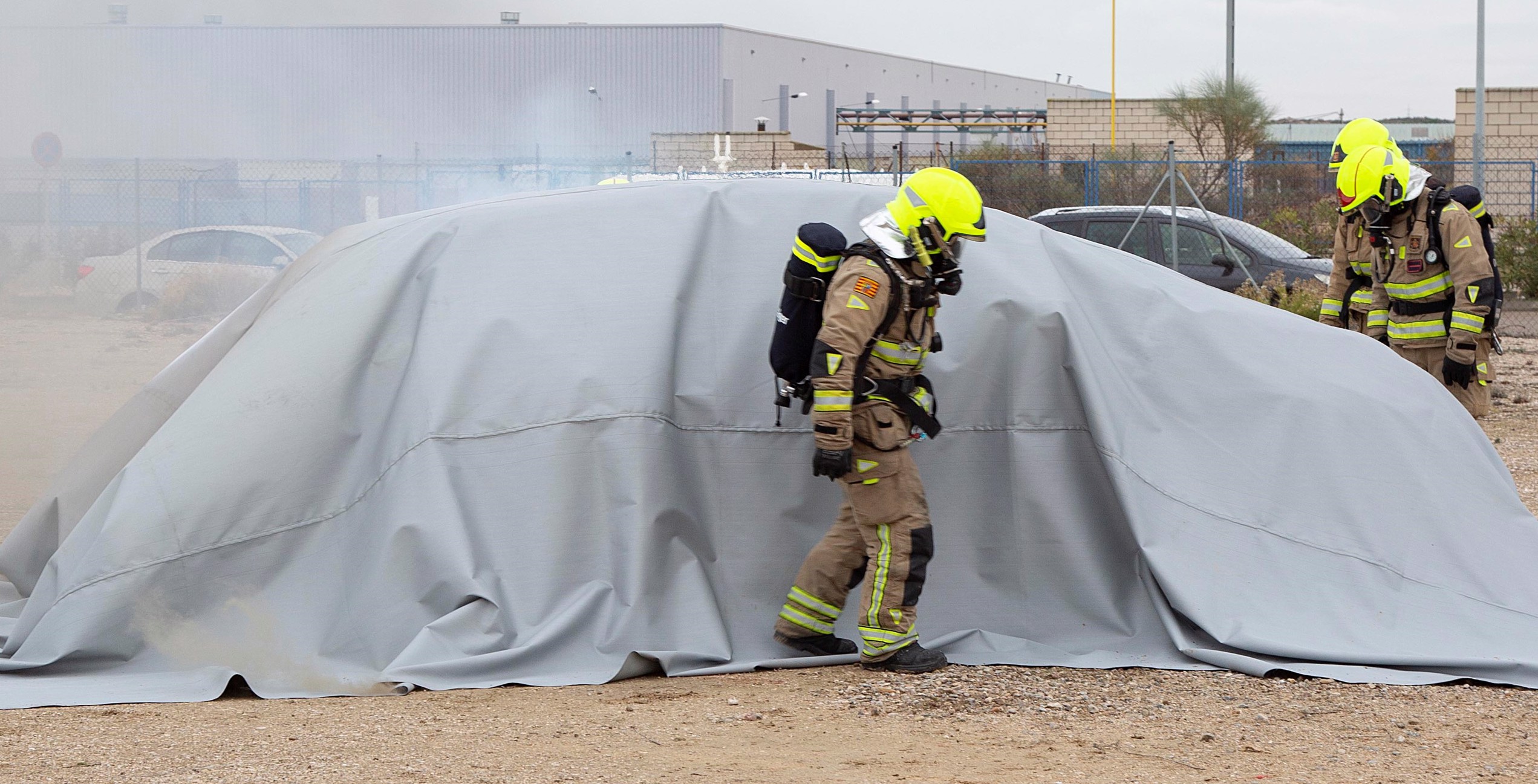More Than Just 'Covering It Up': An In-Depth Analysis of the Practical Value and Selection Guide for Car Fire Blankets

Official Website: https://advancetex.co/
Learn more about Silicone Coated Fabric: https://advancetex.co/category44/
Learn more about PTFE Coated Fabric: https://advancetex.co/category175/
More product videos: https://www.youtube.com/@AdvanceTex0203/videos
When you type "what to do in a car fire" into a search engine, alongside traditional extinguishers, a term appearing with increasing frequency is the "car fire blanket." But this brings more questions: "Does this giant blanket actually work?", "Is it better than an extinguisher?", "Can it handle a lithium-ion battery thermal runaway?".
This article moves beyond a basic introduction to directly address these core concerns, combining industry application cases and professional analysis to reveal the true value of car fire blankets in modern vehicle firefighting.
1. The Core Question: "Are Car Fire Blankets Truly Effective?" — From Theory to Real-World Validation
The answer is a definitive yes, but their effectiveness extends far beyond simply "putting out the flames."
-
Extinguishing by Suffocation: This is the fundamental principle. By instantly covering the vehicle, it cuts off the oxygen supply. According to test reports from various international fire departments, for conventional gasoline car fires in their initial stage, the use of a fire blanket has a success rate of over 95% in containing the fire to a single vehicle and preventing its spread.
-
Suppressing Thermal Runaway (For Electric Vehicles): This is the key advantage that makes it indispensable today. The core of a lithium-ion battery fire is "thermal runaway," a sustained and self-perpetuating internal chemical reaction that can lead to re-ignition. Traditional dry powder or CO2 extinguishers can only quell surface flames but cannot stop this internal reaction. A car fire blanket, by creating a prolonged oxygen-deprived environment (a minimum of 20-30 minutes is often recommended), effectively suppresses the thermal runaway chain reaction. This buys critical time for the battery to cool down and for professional rescue teams to arrive—a feat no portable extinguisher can achieve.
-
Isolating Secondary Hazards: Authoritative fire safety reports indicate that in underground parking garage fires, the danger from toxic smoke is far greater than from the flames themselves. A fire blanket can effectively contain over 90% of toxic fumes, as well as the electrolytes and shrapnel ejected from battery explosions, creating a physical barrier that protects personnel and adjacent vehicles.
2. Operational Guide: "How to Use It Correctly?" — It's Not Just About Throwing It On
While online videos may make it look simple, a professional deployment process is crucial to ensure effectiveness.
-
Preparation and Assessment (10 seconds):
-
Observe Wind Direction: In open areas, always approach the vehicle from upwind.
-
Two-Person Teamwork: A car fire blanket has significant weight (typically 20-30 kg). For maximum efficiency and safety, two people should handle it, each gripping one of the designated handles or edges.
-
-
Deployment and Coverage (5 seconds):
-
With a decisive, swift, and fluid motion, "push" the blanket over the vehicle from the front or rear. Avoid "flinging" it from the side, which can allow airflow to prevent a proper seal.
-
Ensure the edges of the blanket are completely flat against the ground with no significant gaps.
-
-
Waiting and Observation (>20 minutes):
-
Do NOT lift the blanket prematurely! This is the most critical and common mistake. Lifting the blanket too early reintroduces oxygen, leading to re-ignition and potentially causing a more violent "backdraft."
-
Wait patiently until the vehicle's internal temperature has dropped significantly and there are no more popping sounds or visible smoke. For electric vehicles, this waiting period should be even longer.
-
3. Market Status: "Who Is Using It?" — The Adoption from Europe to Asia
Regarding the adoption rate, car fire blankets are currently well-established in some regions and rapidly gaining traction in others.
-
European Application Cases: In Europe, particularly in countries with high EV ownership like Norway and Germany, car fire blankets have become standard fire safety equipment in many commercial underground garages, shopping malls, ferries, and road tunnels. For instance, the Norwegian Public Roads Administration (NPRA) includes large car fire blankets as part of its standard tunnel rescue equipment. In a widely reported case, an EV fire in an Oslo shopping center's garage was successfully contained by security staff using a fire blanket before the fire department arrived. This prevented the activation of the sprinkler system, avoiding widespread water damage and allowing the mall to resume normal operations in just one hour.
-
Current Status in the Chinese Market: In China, the car fire blanket is in its early promotion stages, with awareness growing quickly. The main purchasers are currently concentrated among Class-A office building garages in tier-one cities, large logistics parks, the R&D and after-sales centers of EV manufacturers, and some regional fire rescue departments. As relevant fire codes are updated and market education deepens, the adoption rate is expected to see significant growth in the next 3-5 years.
4. Purchasing Guide: How to Invest in a "Reliable" Car Fire Blanket?
This is not just a purchase; it's an investment in safety.
-
Material is Core, but Not Everything:
-
High Silica Fabric is undoubtedly the top-tier performance material, with a continuous operating temperature of over 1000°C, suitable for the most demanding professional scenarios.
-
High-Quality Silicone Coated Fiberglass Fabric is the mainstream choice. With a continuous operating temperature between 550°C and 800°C, it is more than capable of handling the vast majority of vehicle fires and offers better cost-effectiveness.
-
Focus on Coating and Density: Regardless of the base material, check that the silicone coating is uniform and free of pinholes, as this directly affects its airtightness. Additionally, the fabric should have a high weave density, feeling heavy and substantial to the touch.
-
-
Look for Certifications and Standards: When purchasing, request test reports from the supplier that comply with relevant fire product standards. While a dedicated international standard for "car fire blankets" may still be emerging, the material's performance should at least meet the requirements for Class A (non-combustible materials) as defined by standards like
GB 8624-2012or equivalent local regulations. -
The Importance of the Deployment System: A good fire blanket comes with a well-designed storage case or bag. Does it have clearly marked handles? Does it deploy smoothly without snagging? These details are critical when every second counts.
Conclusion
The car fire blanket is not a magic bullet, but it is a revolutionary supplement to traditional firefighting methods, especially in the context of modern vehicle fires and EVs. By suffocating the fire, suppressing thermal runaway, and isolating toxic hazards, it offers a safer, more thorough, and less damaging fire control solution.
For any organization that manages concentrations of parked vehicles, understanding and equipping your facility with car fire blankets is no longer a "nice-to-have." It is a critical component to consider when building a modern, forward-thinking fire safety system.

